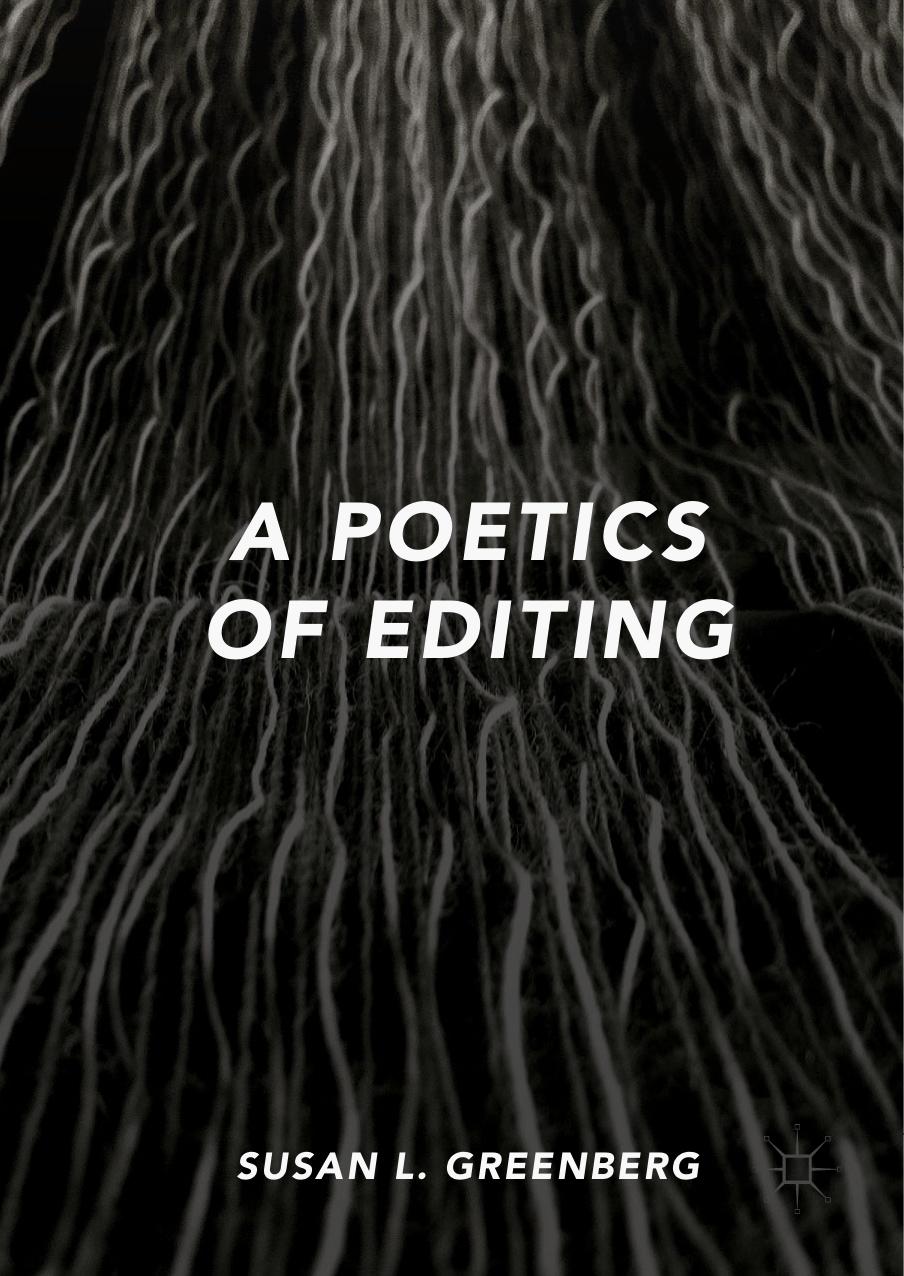A Poetics of Editing by Susan L. Greenberg

Author:Susan L. Greenberg
Language: eng
Format: epub, pdf
ISBN: 9783319922461
Publisher: Springer International Publishing
Editing and Form
One response posed to the problem is to create spaces that are not intimately bound up with a centralised network, by retaining ‘archaic’ or residual techniques. The aim of such a strategy is to create slack in the system, a ‘buffering capacity that allows organizations and social systems to absorb unpredicted, and often unpredictable, shocks’ (Liu 2004a, 298). I contend that editing itself, that extra layer of human labour and reflection, provides an example of potential slack. From a strictly literary point of view, slack may also show its presence via the persistence of human narratives in web-friendly formats.
Earlier we considered the weblog as an example of human remediation, with reference to the motives and rationale behind its overall genesis. On that level, the human input remains important whether it takes the form of short explanatory comments or longer narrative blog posts. The question considered now is whether the specific narrative conventions of the new digital genres say anything about the importance of writing to that media channel. 10 As author Jonathan Letham notes, ‘The sweet irony is that so much of the online world takes a written form. What was meant to be a postliterate or visually literate culture is now obsessed with epistolary exchange. Letters. Or diaries’ (Vida 2005, 36).
The association has been noted elsewhere: Jay Bolter wrote long ago about digital media as a ‘writing space’ (1991), Alan Liu has considered the effect of structured text such as XML on writing practice (2004b), and Matthew Kirschenbaum offers a literary history of word processing (2016). In studies of the blog, we encounter Carolyn Miller and Dawn Shepherd (2004, 2009) applying Miller’s landmark work on genre (1984) and Lloyd Bitzer’s concept of a recurring ‘rhetorical situation’ (Bitzer 1968), involving ‘interested speech’ in the ‘presentation of the self’ (Krause 2007). This chapter aims to add to the conversation with observations of special relevance to our subject.
From examples across time, we have seen how acts of editing influence the voice of a text and connect voices across different texts. And it is the very human metaphor of voice that recurs in discussions about the digital writing space. In one attempt to pinpoint the medium’s distinctive mix of written and oral cultures—a reference to Ong’s concept of ‘secondary orality’—the orality of new media is described as something in which ‘people speak, not as authors to an anonymous public, but rather in the form of a colloquial conversation between participants who are co-present in the act of speaking’ (Nunberg 1996, 132). In another, the immediacy of blog writing is compared to the vanishing quality of speech and pronounced as lying ‘somewhere between conversation and Writing (with a capital W). They’re printed blurts that lithify into word balloons that float in cyberspace for the duration, making them searchable transcripts of thinking-out-loud’ (Searls 2001). The presence of oral culture is also noted not just in audiovisual culture ‘but also in the e-mail, threaded discussions, chat, and other talky media of information culture’ (Liu 2004a, 308).
Download
This site does not store any files on its server. We only index and link to content provided by other sites. Please contact the content providers to delete copyright contents if any and email us, we'll remove relevant links or contents immediately.
| Books & Reading | Comparative Literature |
| Criticism & Theory | Genres & Styles |
| Movements & Periods | Reference |
| Regional & Cultural | Women Authors |
4 3 2 1: A Novel by Paul Auster(12281)
The handmaid's tale by Margaret Atwood(7678)
Giovanni's Room by James Baldwin(7189)
Asking the Right Questions: A Guide to Critical Thinking by M. Neil Browne & Stuart M. Keeley(5632)
Big Magic: Creative Living Beyond Fear by Elizabeth Gilbert(5610)
Ego Is the Enemy by Ryan Holiday(5294)
The Body: A Guide for Occupants by Bill Bryson(4974)
On Writing A Memoir of the Craft by Stephen King(4863)
Ken Follett - World without end by Ken Follett(4645)
Adulting by Kelly Williams Brown(4487)
Bluets by Maggie Nelson(4473)
Eat That Frog! by Brian Tracy(4434)
Guilty Pleasures by Laurell K Hamilton(4360)
The Poetry of Pablo Neruda by Pablo Neruda(4038)
Alive: The Story of the Andes Survivors by Piers Paul Read(3968)
White Noise - A Novel by Don DeLillo(3953)
Fingerprints of the Gods by Graham Hancock(3940)
The Book of Joy by Dalai Lama(3899)
The Bookshop by Penelope Fitzgerald(3775)
